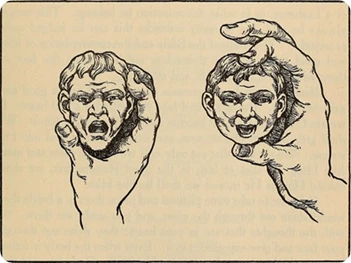 Let's look now to the Schizophrenia Spectrum and Other Psychotic Disorders chapter of DSM-5 as a source for some free ASWB-exam-style practice questions. The disorders covered in the chapter are:
Let's look now to the Schizophrenia Spectrum and Other Psychotic Disorders chapter of DSM-5 as a source for some free ASWB-exam-style practice questions. The disorders covered in the chapter are:
- Schizotypal (Personality) Disorder
- Delusional Disorder
- Brief Psychotic Disorder
- Schizophreniform Disorder
- Schizophrenia
- Schizoaffective Disorder
- Substance/Medication-Induced Psychotic Disorder
- Psychotic Disorder Due to Another Medical Condition
- Catatonia Associated with Another Mental Disorder
- Catatonia Disorder Due to Another Medical Condition
- Other Specified Schizophrenia Spectrum and Other Psychotic Disorder
- Unspecified Schizophrenia Spectrum and Other Psychotic Disorder
Symptoms overlap disorder-to-disorder in this chapter, so knowing a little bit about the details will help you answer a question drawn from this chapter if it appears on the social work licensing exam. For example:
A man tells a social worker that for the last three months, he's been hearing voices telling him he's an awful person. He has lost his job due the voices and his girlfriend no longer answers his calls. He reports this without apparent emotion. What is the MOST likely diagnosis for this client?
A. Schizophrenia
B. Schizophreniform Disorder
C. Schizoaffective Disorder
D. Brief Psychotic Disorder
Got it? How'd you know?
The answers are all psychotic disorders, so the symptoms in the vignette (hallucinations and flat affect) are less crucial to ascertaining the correct answer than another small detail--duration. The client reports hearing voices "for the last three months." We have our clue!
The essential difference in the criteria for many psychotic disorders is duration. In brief psychotic disorder, symptoms have been present for less than one month. A diagnosis of schizophrenia requires the presence of symptoms going back at least six months. Schizoaffective disorder is less concerned with time, but requires a major mood episode alongside psychotic symtpoms--not what's described here.
That leaves one answer, the correct answer, answer B).
Schizophreniform disorder is diagnosed when two or more symptoms (either delusions, hallucinations, disorganized speech, disorganized or catatonic behavior, or negative symptoms) are present for between one and six months. Just like what's described.
If you didn't know, now you do!
For more reading about schizophreniform disorder and other psychotic disorders, try:
For more questions about psychotic disorders, the DSM, and lots more, sign up for SWTP full-length practice tests!

 Let's look now to the Schizophrenia Spectrum and Other Psychotic Disorders chapter of DSM-5 as a source for some free ASWB-exam-style practice questions. The disorders covered in the chapter are:
Let's look now to the Schizophrenia Spectrum and Other Psychotic Disorders chapter of DSM-5 as a source for some free ASWB-exam-style practice questions. The disorders covered in the chapter are: